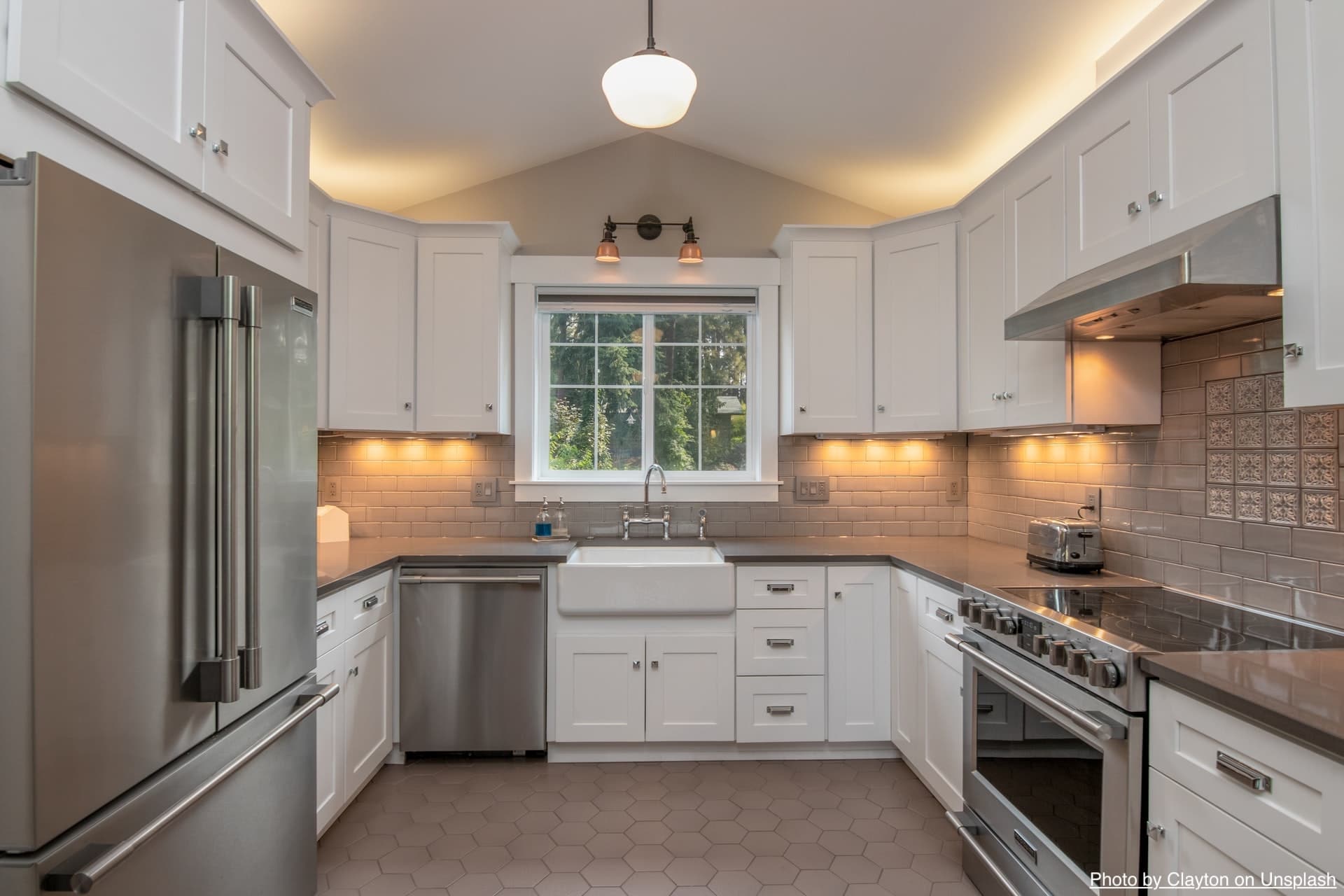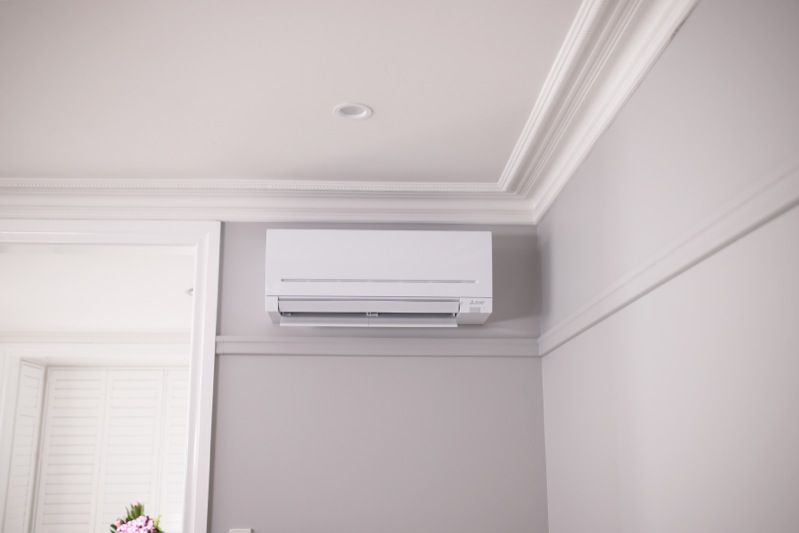Enhancing Your Home with an Indoor Stair Railing: A Finishing Touch of Elegance

Table of Contents
Why Install an Indoor Stair Railing?
Indoor stair railings serve multiple purposes in a home. Not only do they provide added safety and security, but they also enhance the visual appeal of your staircase. Additionally, installing an indoor stair railing can significantly increase the value of your home. Let’s explore these reasons in more detail:
1.1 Enhancing Safety and Security
One of the primary reasons to install an indoor stair railing is to improve safety within your home. Staircases can be hazardous, especially for children, the elderly, or individuals with mobility issues. By adding a sturdy railing, you create a physical barrier that helps prevent accidents and provides support while navigating the stairs.
Furthermore, an indoor stair railing offers an added layer of security to your home. It acts as a deterrent for intruders and prevents accidental falls or slips. Whether you have a two-story house or a basement staircase, a well-designed railing can make a significant difference in ensuring the safety of your family and guests.
1.2 Adding Visual Appeal and Elegance
An indoor stair railing is not just a functional element; it also adds aesthetic value to your home. With a wide range of materials, designs, and finishes available, you can find a railing that complements your interior décor and personal style.
From sleek and modern stainless steel railings to ornate wrought iron designs, the options are endless. You can choose a railing that blends seamlessly with your existing staircase or make a bold statement by opting for a contrasting style. The right indoor stair railing can transform a mundane staircase into a focal point, adding a touch of elegance and sophistication to your home.
1.3 Increasing the Value of Your Home
When it comes to home improvement projects, increasing property value is often a top consideration. Installing an indoor stair railing is a cost-effective way to boost the value of your home. Potential buyers or appraisers recognize the importance of safety features, and a well-maintained, aesthetically pleasing stair railing can leave a positive impression.
Additionally, many homebuyers appreciate the added charm and visual appeal that a stylish indoor stair railing brings to a property. A thoughtfully chosen railing can set your home apart from others on the market and help increase its overall desirability, potentially leading to a higher selling price.
Choosing the Right Indoor Stair Railing
When it comes to selecting an indoor stair railing, there are several factors to consider. From material options to design considerations and customization possibilities, let’s explore the key aspects:
2.1 Material Options for Stair Railings
Choosing the right material for your indoor stair railing is essential for both durability and aesthetics. Here are some popular options:
Wood: Wood is a classic choice for indoor railings, offering natural warmth and beauty. It can be stained or painted to match your existing woodwork or interior design theme.
Metal: Metal railings, such as wrought iron, aluminum, or stainless steel, provide a sleek and modern appearance. They are known for their durability and can be customized with various finishes and decorative elements.
Glass: Glass railings have gained popularity due to their contemporary look and ability to create an open and airy atmosphere. They are available in clear, frosted, or tinted options.
Composite: Composite railings combine materials like wood fibers and plastic, offering the look of wood with the low maintenance of synthetic materials. They are resistant to rot, decay, and insects.
2.2 Aesthetics and Design Considerations
When choosing an indoor stair railing, consider the overall aesthetics and design of your home. The railing should complement the architectural style and interior décor. Take into account factors such as the color scheme, flooring materials, and the shape of your staircase.
If your home has a traditional design, a wooden railing with intricate details may be the perfect choice. For a contemporary or minimalist style, a metal or glass railing can create a sleek and sophisticated look. Don’t be afraid to mix and match materials or incorporate unique design elements to create a customized railing that reflects your personal taste.
2.3 Customization and Personalization
One of the advantages of indoor stair railings is the ability to customize and personalize them according to your preferences. Depending on the material you choose, there may be various options for customization.
Wooden railings can be carved or shaped to create unique patterns or motifs. Metal railings can be fabricated with intricate designs or personalized with decorative elements like scrolls or twists. Glass railings can be customized with etchings or patterns for a truly one-of-a-kind look.
Consider consulting with a professional railing contractor or designer who can guide you through the customization process and ensure that your indoor stair railing reflects your individual style and enhances the overall aesthetic of your home.
Installation Process and Tips
Installing an indoor stair railing may seem like a daunting task, but with the right preparation and guidance, the process can be manageable. Let’s explore the steps involved:
3.1 Preparing for Installation
Prior to installation, it is essential to gather the necessary tools and materials. You will typically need a drill, measuring tape, level, screws or brackets, and the railing components.
Measure your staircase accurately to ensure that you purchase the correct length of railing. Consider the height and spacing requirements set by local building codes to ensure compliance with safety standards.
If you are unsure about the installation process or have complex requirements, it is best to seek professional help. A skilled installer will ensure that your indoor stair railing is securely and correctly installed.
3.2 Step-by-Step Guide to Installing an Indoor Stair Railing
Here is a basic step-by-step guide for installing an indoor stair railing:
- Mark and measure: Use a measuring tape and level to mark the desired height and position of the railing on the wall or balusters.
- Prepare the mounting surface: If installing a wall-mounted railing, ensure that the surface is clean and free from any obstructions. If using balusters, make sure they are securely attached to the stairs.
- Drill pilot holes: Use a drill to create pilot holes for the screws or brackets that will hold the railing securely in place.
- Install the railing: Fasten the railing brackets or balusters to the wall or staircase using the appropriate screws. Ensure that the railing is level and securely attached.
- Test for stability: Once the railing is installed, apply pressure to check its stability. Ensure that it can support the weight of an adult and does not wobble or shift.
3.3 Common Mistakes to Avoid During Installation
While installing an indoor stair railing, it is important to avoid common mistakes that can compromise safety and stability. These mistakes include:
– Failing to properly anchor the railing to the wall or balusters
– Ignoring local building codes and regulations
– Using incorrect or inadequate fasteners
– Failing to level the railing
– Not testing the railing for stability after installation
To ensure a successful installation, consider seeking guidance from professionals or consulting installation guides specific to your chosen railing system.
Maintenance and Upkeep of Indoor Stair Railings
Proper maintenance is key to ensuring the longevity and visual appeal of your indoor stair railing. Here are some maintenance tips:
4.1 Cleaning and Care Techniques
The cleaning method for your indoor stair railing will depend on the material you have chosen. Here are some general cleaning tips:
– Wood railings: Regularly dust the railing with a soft cloth or microfiber duster. Spot clean any spills or stains with a mild soap solution and a soft cloth. Avoid using abrasive cleaners that may damage the finish.
– Metal railings: Use a damp cloth to remove dust and dirt. For stubborn stains, use a mild soap solution or metal cleaner recommended by the manufacturer. Dry the railing thoroughly to prevent water spots or rust.
– Glass railings: Clean glass railings with a non-abrasive glass cleaner or a mixture of vinegar and water. Use a lint-free cloth or paper towels to avoid streaks.
Regular maintenance will keep your indoor stair railing looking its best and prevent the buildup of dirt, grime, or water spots.
4.2 Repairing and Refinishing
If your indoor stair railing becomes damaged or worn over time, there are ways to repair and refinish it:
– Wood railings: Minor scratches can be remedied by sanding the affected area with fine-grit sandpaper and applying a matching wood stain or finish. For deeper scratches or damage, consider consulting a professional woodworker.
– Metal railings: If your metal railing develops rust, use steel wool or a wire brush to remove the rust. Apply a rust converter or primer before repainting the railing. For more extensive damage, contact a professional metalworker.
– Glass railings: Small scratches on glass can often be buffed out using a glass polishing compound. For significant damage, consult a professional glass repair service.
Regularly inspect your indoor stair railing for any signs of wear or damage and address them promptly to prevent further deterioration.
4.3 Troubleshooting Common Issues
Despite proper maintenance, indoor stair railings may encounter common issues that require troubleshooting:
– Loose railing components: If you notice any loose screws, brackets, or balusters, tighten them immediately to ensure stability. If the issue persists, consult a professional for repairs.
– Squeaking or creaking noises: A squeaking or creaking railing can be caused by loose brackets or insufficient lubrication. Apply a lubricant such as WD-40 to the affected areas to reduce friction.
– Fading or discoloration: Over time, exposure to sunlight can cause fading or discoloration in certain railing materials. Consider using UV protectant coatings or coverings to minimize damage from UV rays.
By addressing these common issues promptly, you can maintain the functionality and appearance of your indoor stair railing for years to come.
Installing an indoor stair railing not only enhances safety and security but also adds a touch of elegance and sophistication to your home. By carefully selecting the right materials, designs, and finishes, and following proper installation, maintenance, and upkeep practices, you can enjoy a beautiful and functional stair railing that complements your home’s aesthetics and increases its value.
FAQ
Question: 1. Why Install an Indoor Stair Railing? – Installing an indoor stair railing serves multiple purposes in a home. Not only does it provide added safety and security, but it also enhances the visual appeal of your staircase and increases the value of your home.
Question: 2. What are the material options for indoor stair railings? – There are several material options available for indoor stair railings, including wood, metal, glass, and composite. Each material offers different aesthetics and durability characteristics, allowing you to choose the one that best suits your preferences and needs.
Question: 3. How do I choose the right indoor stair railing for my home? – When choosing an indoor stair railing, consider factors such as the overall aesthetics and design of your home, the material options, and the customization possibilities. It’s important to select a railing that complements your interior décor and reflects your personal style.
Question: 4. What is the installation process for an indoor stair railing? – The installation process for an indoor stair railing involves marking and measuring the desired height and position, preparing the mounting surface, drilling pilot holes, installing the railing brackets or balusters, and testing for stability. Proper installation ensures a secure and functional railing.
Question: 5. How do I maintain and care for my indoor stair railing? – Different materials require different cleaning and care techniques. Regular dusting, spot cleaning, and avoiding abrasive cleaners are general cleaning tips. If the railing becomes damaged, such as scratches or rust, there are repair and refinishing options available. Promptly addressing any issues and regularly inspecting the railing will help maintain its appearance and functionality.
Question: 6. What are some common issues with indoor stair railings and how can I troubleshoot them? – Common issues with indoor stair railings include loose components, squeaking or creaking noises, and fading or discoloration. Tightening loose components, applying lubricant to reduce friction, and using UV protectant coatings or coverings can help troubleshoot these issues.
Question: 7. Can I customize and personalize my indoor stair railing? – Yes, indoor stair railings can be customized and personalized according to your preferences. Depending on the material chosen, there are options for unique patterns, designs, and decorative elements. Consulting with a professional railing contractor or designer can help guide you through the customization process.
Question: 8. Does installing an indoor stair railing increase the value of my home? – Yes, installing an indoor stair railing can increase the value of your home. Potential buyers or appraisers recognize the importance of safety features and appreciate the added charm and visual appeal that a well-designed stair railing brings to a property. A stylish railing can set your home apart and potentially lead to a higher selling price.
Useful Resources:
- HomeAdvisor – A website that provides resources and information on home improvement projects, including indoor stair railings.
- This Old House – A comprehensive resource for DIY home improvement projects, with articles and videos on installing and maintaining indoor stair railings.
- Better Homes & Gardens – A website that offers tips and inspiration for home decor, including information on choosing the right indoor stair railings for different styles.
- Family Handyman – A resource for DIY enthusiasts, providing step-by-step guides and tips for installing and maintaining indoor stair railings.
- The Spruce – A website that offers expert advice on home improvement projects, including information on materials, design considerations, and installation tips for indoor stair railings.
- Realtor.com – A website that provides information on increasing the value of your home, including the importance of safety features like indoor stair railings.
- Houzz – An online platform that offers design inspiration and resources for home remodeling projects, including indoor stair railings.
- Porch – A website that connects homeowners with professionals for home improvement projects, including the installation and maintenance of indoor stair railings.





